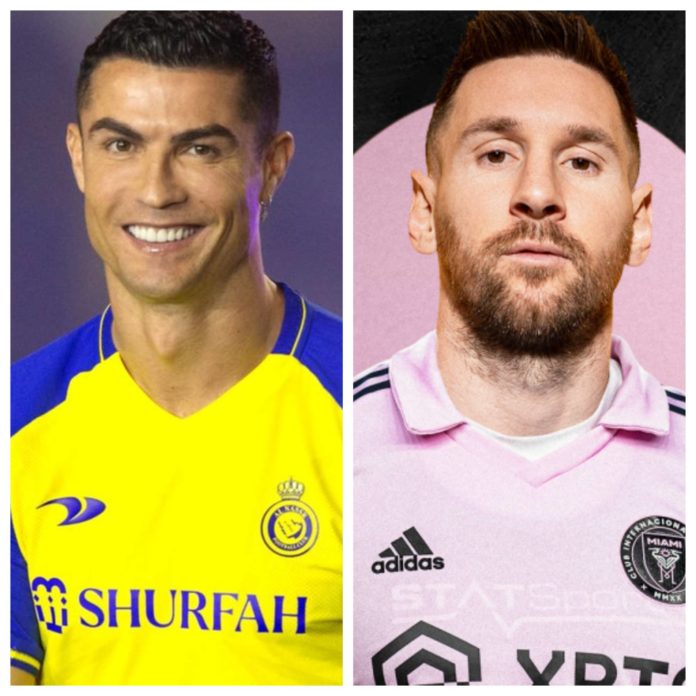Cristiano Ronaldo’s recent comments about Saudi Pro League being better than MLS set the internet on fire. Of course, that happens anytime Ronaldo says something which can be taken as a veiled attack on Lionel Messi. But, is Saudi Pro League better than MLS?
That question’s answer would have been a no-brainer one year ago. Now? It’s a discussion worth having.
The Gulf country has swooped up many major European stars, and not just elder statesmen looking for one last payday.
Players like Ruben Neves and Sergei Milinkovic-Savic, who would arguably walk into the squad, if not the starting XI of most elite European sides, have instead chosen to take the path to Saudi Arabia.
Here’s an attempt at gauging if Saudi Pro League really is better than MLS based on a number of factors-
Player quality
This is the area in which the gap has been closed to a huge extent. MLS used to be popular for getting marketable stars near the end of their career in the hope that they would kick on the interest in the league.
However, Saudi’s mission has been on a different level altogether.
They are offering pretty much blank cheques to players to entice them to come to the Saudi Pro League. As a result, they even have the reigning Ballon d’Or winner in their ranks now.
Inter Miami’s signing of Lionel Messi is arguably still the most influential signing across both leagues, but Saudi Arabia are not stopping.
With many European superstars at the peak of their powers signed and other marquee stars chased, expect the Saudi Pro League to have even more elites fighting it out in the Gulf country.
By the end of the transfer window, it will definitely go ahead of MLS in terms of player quality across the league.
Verdict: Saudi Pro League by a good margin
Grassroots development
Even the Chinese Super League offered exorbitant wages to players but they could never take off and become sustainable like the MLS is now.
A major reason why is that the MLS started investing in their grassroots program to create stars of their own.
As a result, the USA team is now a genuine threat in international tournaments and players like Christian Pulisic, Giovanni Reyna, and Weston McKennie, to name a few are established European quantities.
Buying elite players from outside can improve the spectacle of the league, but the prospects of it are improved only through concerted investment at the grassroots.
Saudi Arabia might be hoping that more people tune into football if they buy superstars and increase player quality across the league. However, only when more people take up football as a career due to good facilities at the ground level will the league become sustainable instead of the flashy kid on the block.
Verdict- MLS is far ahead
Viewership and global attention
Although Saudi Pro League has a headstart of 14 years over the MLS (1979 vs 1993), this is still an unfair fight because this upcoming season will be the first when the Saudi Pro League will have global attention.
Granted, MLS doesn’t have great viewership figures either. The average viewership numbers of MLS in 2022 were 343,000. However, this figure has been ever-increasing while facing a fight against behemoths like the NBA, NFL, and MLB.
Moreover, the USA is arguably in the golden age of football. Most MLS fans are young and football is now genuinely seen as a viable career option.
The same can’t be said of Saudi Pro League. Perhaps with consistent effort and marketing, the Saudi Pro League, who only came into the global consciousness with Ronaldo’s signing and are still taking baby steps towards global relevance, can get to MLS’ level. But they are not there right now, nowhere near.
Verdict- MLS is far ahead
Match going fans- Attendance figures
Global viewership can be increased by just buying better players, and hence putting out a better quality product on the television.
However, stadium attendance figures tell much about the interest of the country in the game, a key indicator for the popularity of every league.
A full stadium with a raucous atmosphere lends itself to a great product which the Premier League can attest to.
MLS wins over Saudi Pro League here as well, and by a huge margin.
As per the latest figures, the total number of spectators in MLS in the 2023 season was 7,011,953.
A game on average was attended by 21,981 people. Teams like FC Dallas, Minnesota United, and Los Angeles Galaxy regularly sold out their stadiums while the majority of teams managed to sell more than 90% of the seats.
The picture was grim for Saudi Arabia.
Firstly, the infrastructure is not even comparable. Out of 16 teams, seven had stadiums with a capacity of less than 20k, with three having less than 10k.
Even then, the stadiums were less than half full for most clubs.
Al-Hilal, the club that signed Neves and Milinkovic-Savic, had an average turnout of 9,854 in a stadium that holds 56,453.
Ronaldo’s Al-Nassr saw a bump in attendance figures after he arrived, but the figures before that were so abysmal that the average attendance ended up being 17,638 in a 25k seater stadium.
Even the smaller clubs with small stadiums, like Al-Batin with their 6k seater, saw an average attendance of just 3,467.
Note: Attendance figures courtesy of Transfermarkt
These will undoubtedly go up as star players turn out for these clubs, but it increasingly looks like a case of lack of matchday culture in the country, which the USA looks to have successfully created.
Verdict- MLS is far ahead
Final call- Is Saudi Pro League better than MLS?
Just buying better players does not make a league better, at least in the short term. While Saudi Pro League, with its bottomless pit of cash, has the chance of upsetting the world order in football, their current status is just that of a transfer market disruptor.
MLS is ahead in just about every aspect of what makes a league better and more sustainable. Saudi’s biggest achievement is that they have managed to make this an actual discussion in just one transfer window.
Don’t count them out in the long run, but for now, Cristiano Ronaldo’s statement might be more wish than reality.
*This article is sponsored by Khelo India, a flagship program to inculcate a sporting culture in the country.




